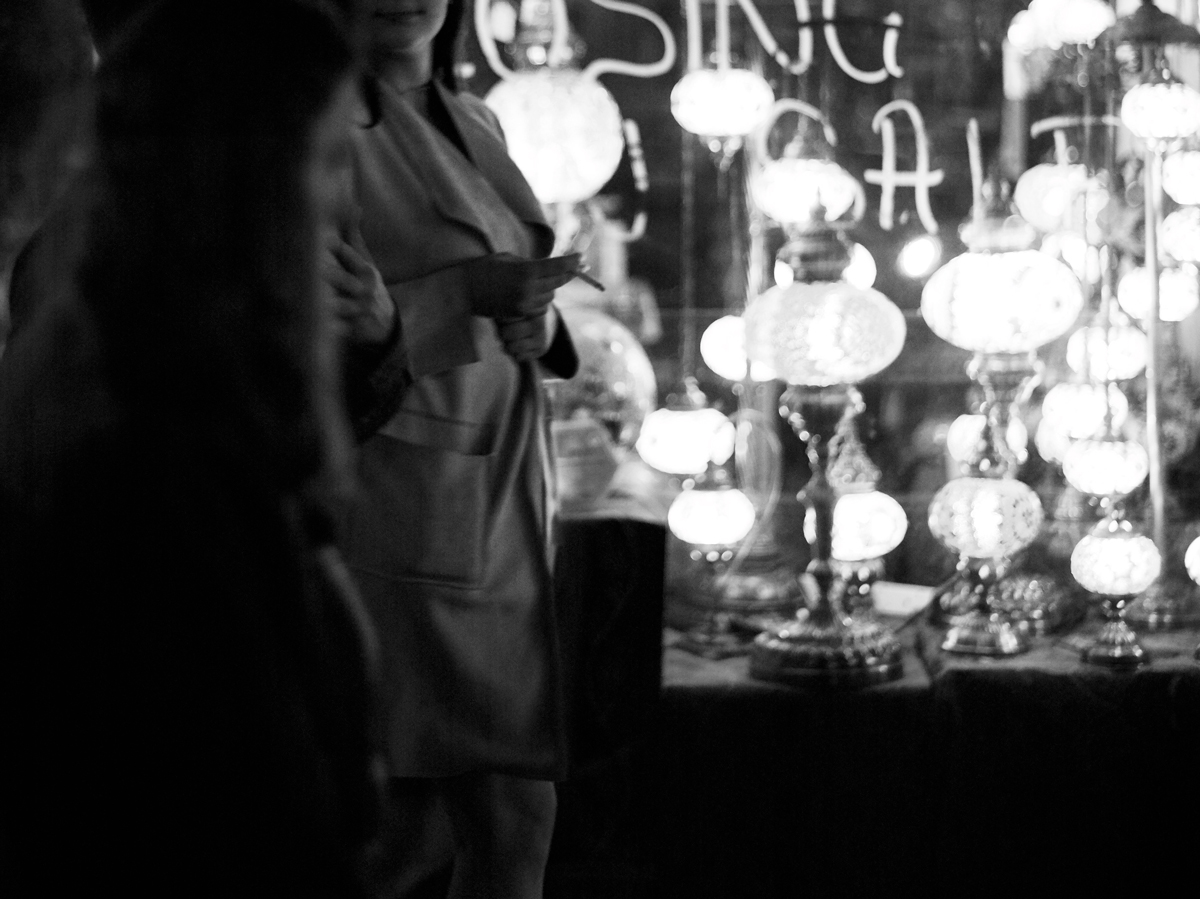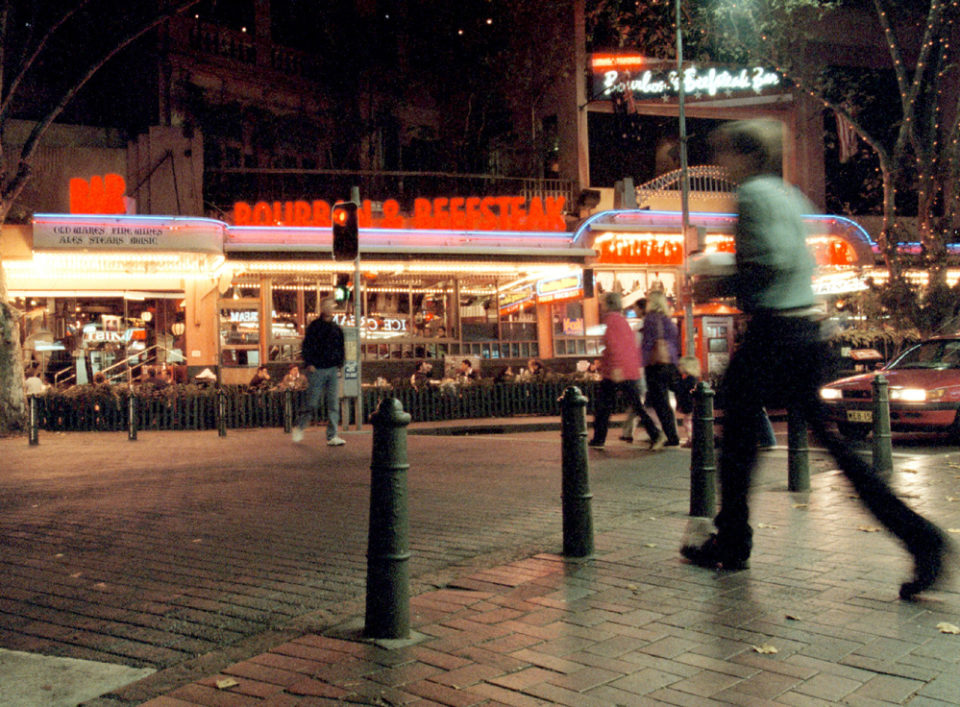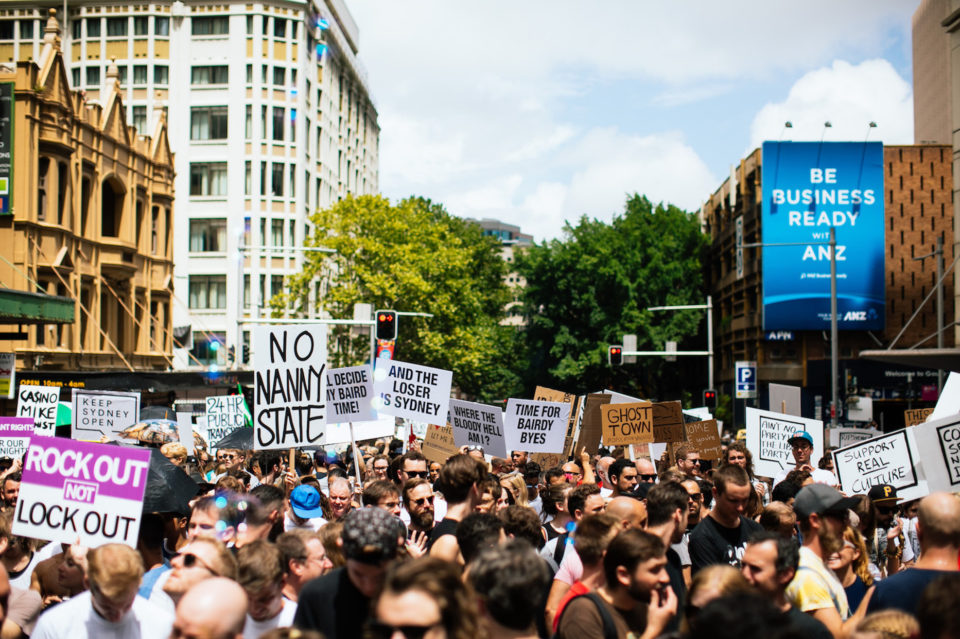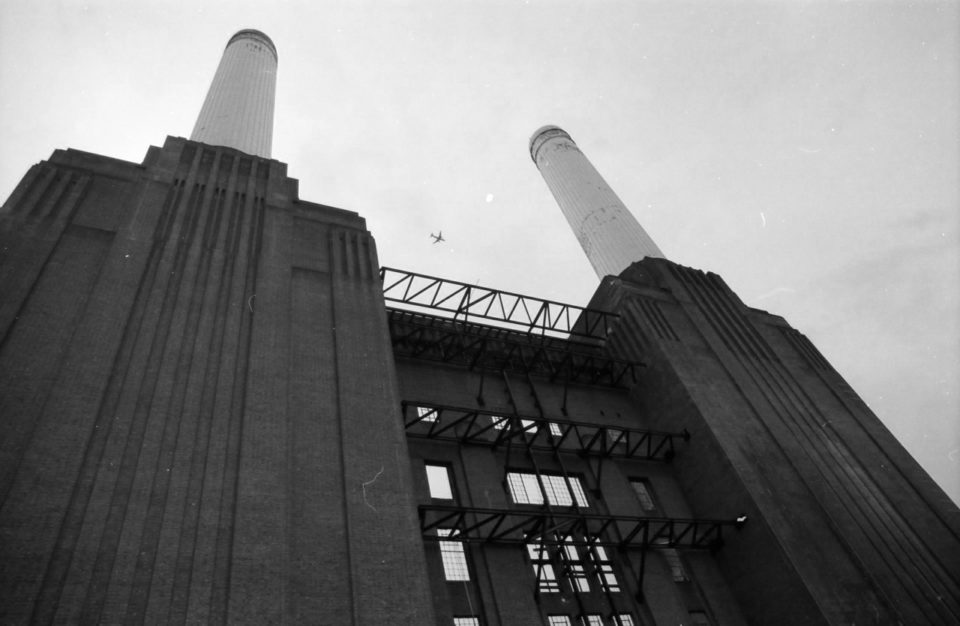“There were too many people on the footpath. There was too much banging of shoulders and bloodiness, and unpleasantness, and there wasn’t any transport to allow people to get home. So, then Barry [O’Farrell; former Premier] just comes in with this sledgehammer introducing these lockout laws, which was devastating,” said Sydney’s Lord Mayor Clover Moore.
She blames state governments “in the thrall of big liquor” for “giving lifetime licences to some venues in Kings Cross”. “That was one of the reasons why we had so many people in just the one area.”
Moore spoke in November at the opening of the Global Cities After Dark Forum, addressing over 200 artists, marketers, PR consultants, drug and urban night researchers, a variety of suits and top-knotted night-promoters. They had gathered to hear what Sydney might learn from how other cities have transformed their nights.
The main attraction and co-curator of the forum was Mirik Milan, a 37-year-old former club promoter, and currently the official ‘night mayor’ of Amsterdam. Also featured were Lutz Leichsenring from Berlin and Kate Becker from Seattle.
Mirik Milan told NEIGHBOURHOOD that Amsterdam’s first night mayor came in 2003 – along with a fight to get acknowledgement for the value that subculture and nightlife brought to the city. He describes his team now as, “independent, not for profit. We’re not a lobby group or activists, or an association group for companies. We really want to bridge the gap between the mayor, city councillors, small businesses, nightclubs, and also city residents.”
Milan is part of a global trend that sees bottom-up collective action taking responsibility for shaping the 24-hour cities it wants to create. Many of this movement’s luminaries argue politicians don’t understand the night economy; they don’t work in it, and don’t get its complexity.
If the people that do work in the night economy – taxi drivers, waiters, chefs, DJs, promoters – are the best placed to understand it, is it time they had their own voice?
The City of Sydney precinct covers 26 square kilometres and has 224,000 residents with a medium age of 32. It also has the country’s largest night-economy, turning over $3.6 billion annually from the 4,680 businesses that generate over 32,000 jobs. That’s 176 businesses per square kilometre. Melbourne has 65.
In the year following the 2014 lockout laws, even though violence had been trending down for some time, there was still a marked 45 per cent decrease in alcohol-related violence in Kings Cross.
There was also a 22 per cent decrease in the Sydney entertainment precinct, an area that stretches from Haymarket to the Rocks, and from Darling Harbour to Darlinghurst and Woolloomooloo.
Comparing the two years prior to the lockout laws with the two years following shows serious facial injuries have fallen at St Vincent’s Hospital in Darlinghurst by 65 per cent. There also hasn’t been a single death in its ICU from alcohol-related assault.
But in the wake of the lockout laws, 44 drink-led businesses went under with 140 jobs.
Though statistics indicate no measurable change, anecdotal reports persistently paint Newtown of a weekend as rougher, drunker and wilder, one suburb’s problems moved on to another, the new Kings Cross.
Mirik Milan explained to NEIGHBOURHOOD how as Amsterdam’s night mayor he countered binge-drinking by banning ‘happy hours’, preventing operators selling more alcohol in a shorter space of time. Instead of ‘naming and shaming’ bad promoters, they began ‘naming and faming’ clubs that were inclusive and non-discriminatory.
The city also offered 24-hour licences that venue operators could pitch for. But there were rules. Venues had to be outside the city centre and had to be multi-use, offering a restaurant, bar, theatre and gallery, as well as a club. One of those, the now very popular De School is always sold out.
Milan says spreading people out stopped thousands of punters suddenly being pushed into city streets at closing time, with potential for violence and noise. “Now, 4 or 5 years down the line we see a 25 per cent decline of alcohol related violence in the city centre, and a 30 per cent decline of nuisance of any sort, in a district which you can compare to Kings Cross.”
Night mayors have now popped up in Paris and Zurich. In the wake of 40 per cent of London’s music venues closing down over the last decade, that city now has a ‘Night Czar’. New York City Council recently created the Office of Nightlife. Berlin, a city known for its parties, has the Club Commission. And Seattle has seen a groundswell of support for music and the creative arts.
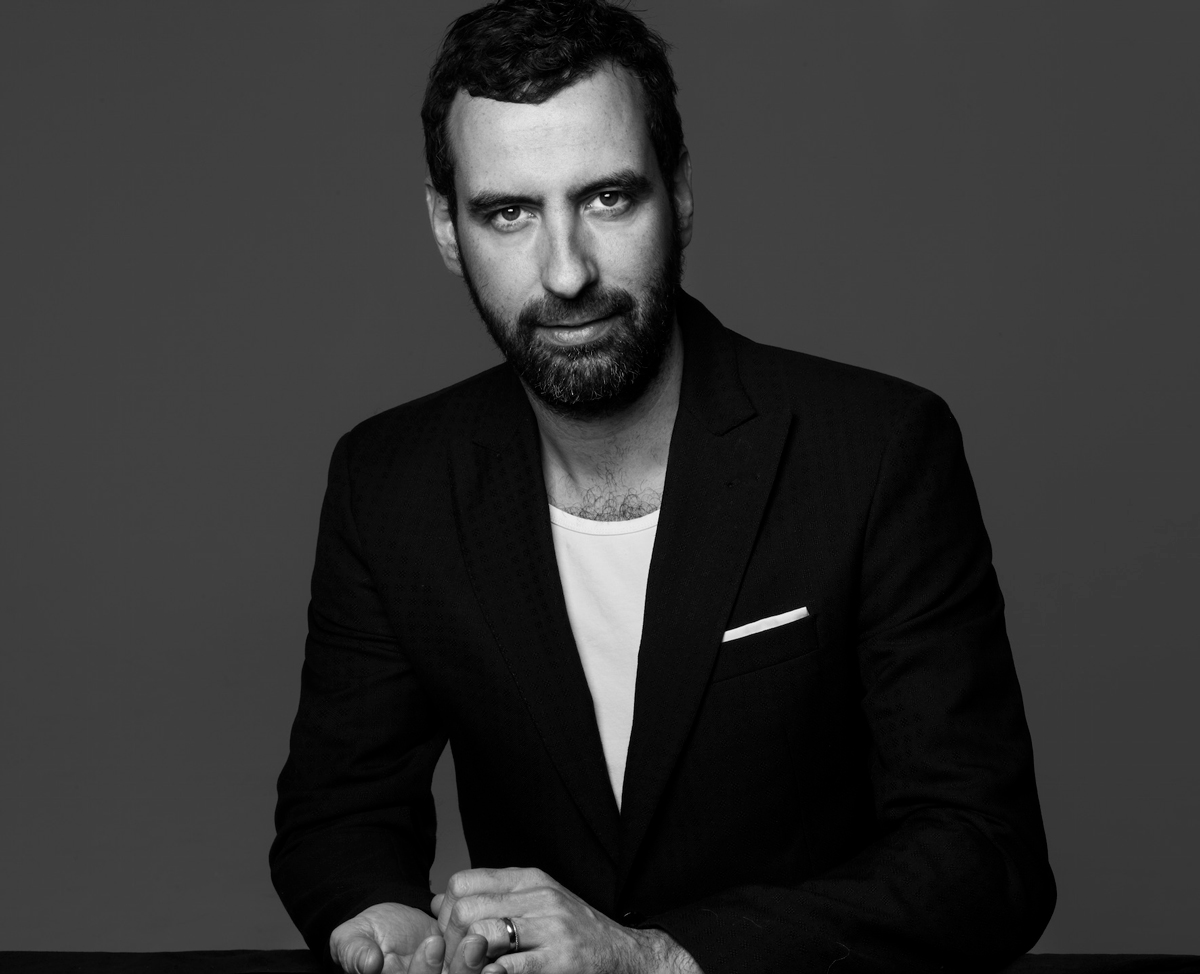
Mirik Milan, night mayor of Amsterdam.
Lutz Leichsenring became the spokesperson for Berlin’s Club Commission 15 years ago when residential high-rise went up in existing club areas and residents were getting clubs shut down. The Commission lobbied for the rights of Berlin’s vast underground club scene. They also did the city a huge favour by collecting data on all the venues in Berlin, rating them on their space, the quality of content and if the venue was multi-use.
From the data came Berlin’s ‘Creative Footprint’, an initiative that measures and indexes urban creative space. The index encouraged clubs and districts to compete, to increase their ranking, but the data also influenced policy-makers on where, and how to invest.
“The Club Commission has 220 members,” Leichsenring told the Global Cities After Dark forum. “As a spokesman, I try and explain what we do to different stakeholder groups, and now I’m a member of the Music Board, a funded organisation that has 2 million a year to fund pop music in the city. I’m also now in the Chamber of Commerce. I started there a couple years ago as an exotic person amongst the airline companies and high industries, but today, 35 per cent of the tourists are coming to Berlin for the music and the nightlife. We have 35 million overnight stays per year, it’s a big number… Berlin is now the world’s third favourite destination after Paris and Rome.”
Kate Becker directs the Office of Film and Music in Seattle. In the early 90s, grunge might have put the artist town on the map, but there wasn’t much teen-spirit amongst city officials. Poster bans and repressive venue laws pushed partygoers underground, into unsafe spaces. When the city refused to talk to the night industry, “we started occupying the lobby outside city council,’ Becker says. “Holding dance parties there. We had people stand up in city council meetings and start playing music and young people would stand up and start dancing… We learnt how to influence politics.”
Night culture became an election issue, and by 2005 savvy politicians launched the Office of Film and Music, which Becker has directed since 2014. The city is now following through on a ten-year vision to grow night culture, looking at housing affordability, initiatives to employ musicians and equitable access to music education to invest in the next generation. “Political leaders cannot do this without the people who are part of this culture being at the table,” Becker says. “I can’t stress enough the importance of having a political advocate.”
Now, when you arrive at Seattle’s Sea-Tac Airport, an overhead service announcement voiced by Quincy Jones, or Jerry Cantrell of Alice in Chains, will tell you where you can pick up your bags, and Macklemore will direct you to where you can smoke. There are live music performances across the terminals and at Sub Pop Records, you can buy vinyl LPs. This is a city of music.
The Berlin and Seattle experiences both support Mirik Milan’s advice that ‘if you want to do this, it’s a long-term vision and can’t be politically or economically motivated.” He also argues that inclusive subculture is the best antidote to rising populism and right-wing ideology. “There’s way too much money being put into traditional art and culture that doesn’t create social or ethnic inclusion. If you spend, like in Amsterdam, 10 million euros only focussing on bottom-up initiatives instead of pouring it into the opera house, I’d say you’d actually have a better liveable city.”
The Global Cities After Dark Forum unanimously identified that bottom-up needs to be the top priority. Cities must identify and empower night-time creatives because they are the source, the present and the future of the city’s culture. Cities that are proactive, or creative, end up with the culture they deserve. What does Sydney want to be and whose vision will we get?
In October, Sydney Council released the discussion paper ‘An Open and Creative City.’ Key proposals are to let shops stay open until 10 pm, allow small-cultural events in existing buildings, protect music and performance venues and manage noise.
Their slightly garbled priority in ‘Open Sydney – Future Directions for Sydney at Night’ is to “work with Destination NSW Destination Dining Partnership to brand Sydney as the dining capital of the Asia-Pacific Region.” Those who perhaps don’t want international friends greeted at Mascot by Paleo Pete waving a duck sausage in one hand and a gastro map in the other might wish for a different vision. Updates as the discussion paper is reviewed and decisions are made is available at sydneyyoursay.com.au.
When NEIGHBOURHOOD asked Milan if he thinks Sydney needs a night mayor, he stressed you can’t sit back and passively await legislation. “You don’t start with installing a night mayor. You start with a conversation and I think Global Cities After Dark is a way to get this conversation going. But nightlife operators also have to take ownership themselves, because they sometimes look like surfers who are just interested in wanting to ride their own wave…
“if you want to have a better nightlife relationship with your city, get organised and be responsible and don’t just lean back and wait for the city to deal with the nightlife issues. You have to represent feasible strong ideas that can create better night life policy.”


